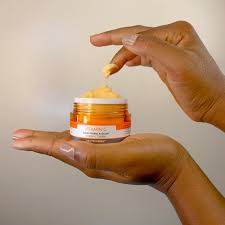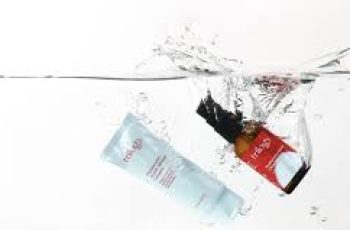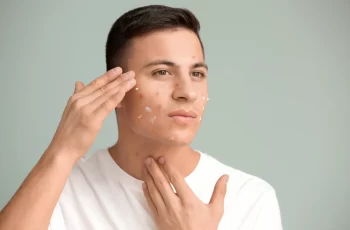
PAR-2 Blockers To Lighten Skin and Even Skin Tone
Protease-activated receptor 2 (PAR-2) is a receptor in the epidermis of the skin that can be blocked to lighten skin color. Niacinamide is an example of a PAR-2 inhibitor. Blocking this receptor can also help prevent melasma and hyperpigmentation from coming back.
Adding PAR-2 blockers to your skin-lightening regimen is one way to lighten skin faster. We recommend using several types of skin lighteners in your skin care routine to lighten dark spots on the skin. PAR-2 receptor blockers can be used with retinoids and tyrosinase inhibitors and other skin lightening ingredients.
Treating uneven skin tone such as melasma and dark spots is challenging because skin lightening ingredients take 8-16 weeks to work. There is no way to lighten skin overnight, but there are tips to make skin lightening treatments work faster and better such as using skin lightening ingredients from several different categories in your skin care routine. PAR-2 blockers is one of those categories.
To understand how PAR-2 blockers work, you need to now how the skin pigment melanin gets into the skin cells called keratinocytes.
What are PAR-2 Blockers? How do PAR-2 blockers work?
Where is Melanin Produced?
Skin pigment, known as melanin, is made in the melanocyte cell and packaged in melanosomes for delivery to skin cells. One melanocyte provides melanin to 35 or more skin cells in the epidermis. Melanocytes move around in the epidermis and dermis, but for this discussion, we are going to visualize melanocytes located in the bottom of the epidermis of the skin forming an Epidermal Melanin Unit. Each melanocyte looks like an octopus and has long arms that extend between skin cells in the epidermis called keratinocytes.
epidermal melanocyte distribution
The skin pigment melanin, packaged in melanosomes, travels up the arms of the melanocytes and into the 36 + attached keratinocytes. This causes the skin color to darken.
movement of melanosomes in melanocytes in epidermis
Why is a PAR-2 Blocker Important in Skin Lightening Products?
At the connection points between the melanocyte and the keratinocytes, there is a receptor that functions like a locked doorway. This doorway is called the PAR-2 receptor. In order for melanosomes filled with melanin to travel from the melanocyte into the keratinocyte, the PAR-2 doorway must be open. Skin lightening ingredients that block the PAR-2 receptor prevent this movement of the melanosomes, preventing skin pigmentation.1
How To Block The PAR-2 Receptor To Lighten Skin?
Where PAR-2 receptors are in the epidermis.
Skincare ingredients can be used to block the PAR-2 receptor. These function as locks on the PAR-2 doorway which prevent movement of melanin into skin cells. Using a PAR-2 blocking skincare ingredient will prevent skin pigmentation. PAR-2 blockers do not lighten dark skin fast but prevent further pigmentation so it can take over 30 days to see a difference in skin color with skin lighteners. PAR-2 blocking ingredients should be used in combination with tyrosinase inhibitors which prevent the production of melanin, and exfoliants which help desquamate away old skin cells so they can be replaced with newer less pigmented skin cells. Of course, sun protection must be used to prevent the formation of new melanin.
niacinamide is the most popular PAR-2 blocker
What Skincare Ingredients Are PAR-2 Blockers?
The most commonly used PAR-2 blocking cosmeceutical ingredient is niacinamide. Niacinamide has many important functions such as decreasing inflammation, increasing cell energy to help cellular repair processes, and blocking PAR-2. Combine niacinamide in a skin lightening skincare routine with tyrosinase inhibitors, a retinoid, a tinted sunscreen, and exfoliants such as hydroxyacid cleansers and retinoids is the best way to remove dark spots on the skin. Other PAR-2 blockers such as activated soy found in Aveeno products are used to lighten skin. New PAR-2 blockers are being developed to be used in skin lightening products. Stay tuned on social media @SkinTypeSolutions to learn when new PAR-2 blockers come on the market.
List of PAR-2 Blockers
There are not a lot of ingredients that block PAR-2. Here is a list of PAR-2 blocking skin care ingredients:
Niacinamide
Active Soy
Niacinamide structure
Niacinamide
Niacinamide, also known as nicotinamide—an amide form of vitamin B3—has become one of the most popular skin care ingredients.
Clinical studies on niacinamide have shown it can reduce melanosome transfer from melanocytes into keratinocytes by up to 68% in in vitro models. (5)
The blocking of the PAR-2 receptor by niacinamide is reversible and not permanent. (7)
Other research showed that a formulation containing 5% niacinamide, when administered twice daily over an 8-week period, caused noticeable reductions in hyperpigmentation. A combined approach, using 3.5% niacinamide with retinyl palmitate, has been documented to offer similar benefits (6).
Additionally, niacinamide’s role is not limited to pigmentation control. It’s recognized as an effective anti-inflammatory component in skincare.
Niacinamide also gives cell energy to repair DNA damage. At the cellular level, it aids in energy production by influencing the NAD/NADH pathway.
Soy
Paine et al. conducted research on soymilk and its derived proteins: soybean trypsin inhibitor (STI) and the Bowman-Birk inhibitor (BBI). Their findings indicated that these proteins have the capability to inhibit PAR-2 activation, which in turn can lead to skin depigmentation. (4) The effects of these soy-derived proteins can be reversed, ensuring limited side effects. The involvement of the PAR-2 receptor is not only limited to pigmentation; it plays a role in various cellular activities.
Several studies have illustrated the ability of these agents to inhibit melanosome transfer, reducing pigmentation. These effects were tested both in the lab and on living organisms. In one experiment involving dark-skinned Yucatan microswine, the application of soybean extract led to visibly lighter skin. A key observation was that only fresh soymilk had this effect, whereas pasteurized soymilk did not. This indicates that a component in the fresh milk, likely the STI, is the active ingredient in depigmentation. Moreover, the use of soymilk showed protective properties against UVB-induced skin darkening. Human trials also confirmed a reduction in pigmented spots after the application of soybean extract. (11)
Another study delved into the effectiveness of a moisturizer containing non-denatured STI and BBI. For this study, 65 women aged 30 to 61 with varying skin conditions were enrolled. They were treated with the moisturizer or a control substance twice a day for 12 weeks. The results showed significant improvements in several skin attributes, including pigmentation, texture, and overall appearance. (9)
Beyond its depigmentation capabilities, soy also contains isoflavones. These possess antioxidant properties and have been associated with potential cancer-preventing benefits.


